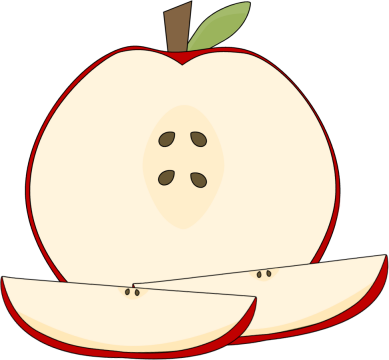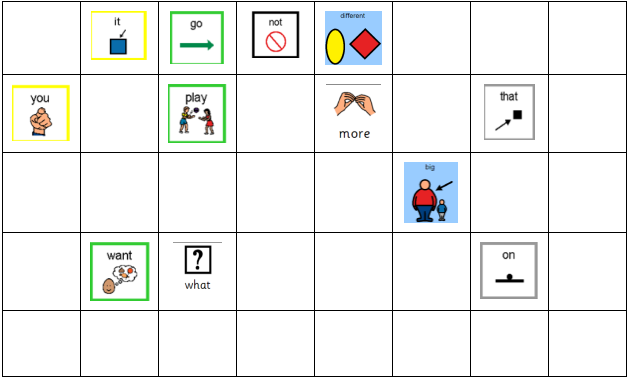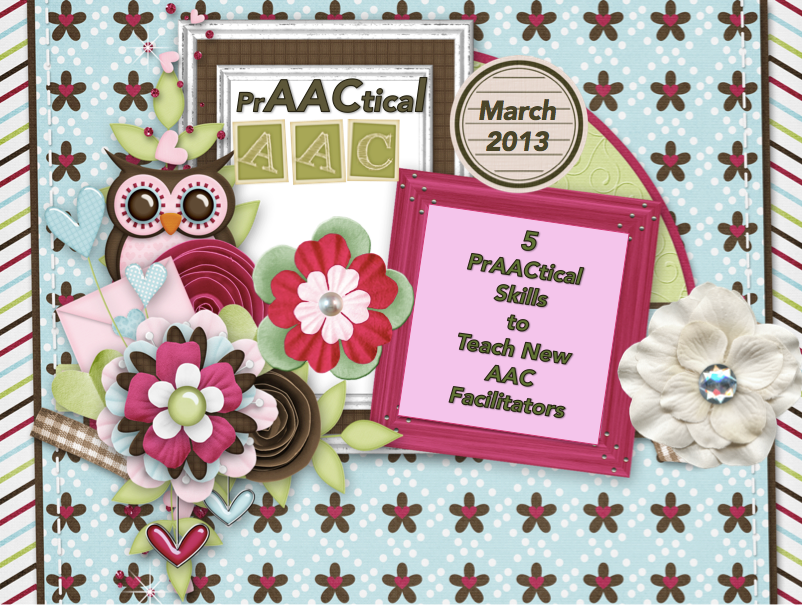The First 12: Getting Started with Core Words

 The focus this month is on core word vocabulary and effective teaching strategies. Most core vocabulary is represented through abstract symbols that range from translucent (i.e., makes sense after it is explained) to opaque (i.e., doesn’t have any resemblance to the word or concept) which makes the need for effective teaching all the more important. It also makes it more fun because meaningful language experiences, emotional language experiences, and repetition with variety experiences are going to be the platform for teaching. Within the platform of authentic language experiences, layers of teaching strategies can be applied. The more strategies we apply to learning, the more we assure ALL learners will benefit from our teaching.
The focus this month is on core word vocabulary and effective teaching strategies. Most core vocabulary is represented through abstract symbols that range from translucent (i.e., makes sense after it is explained) to opaque (i.e., doesn’t have any resemblance to the word or concept) which makes the need for effective teaching all the more important. It also makes it more fun because meaningful language experiences, emotional language experiences, and repetition with variety experiences are going to be the platform for teaching. Within the platform of authentic language experiences, layers of teaching strategies can be applied. The more strategies we apply to learning, the more we assure ALL learners will benefit from our teaching.
Core word vocabulary teaching begins with a few premises that underlie the process. These are not new ideas but ones that should be reaffirmed as you begin teaching. It is important, as always, to presume competence. All learners CAN improve and learn communication and language. By presuming competence, we assume everyone will learn and make progress so we model more robust language and we find supports and strategies to make learning happen. Another premise when teaching core vocabulary is that we will have many periods of TEACHING, not just testing. By implementing teaching paradigms, we provide experiences that help the learner become an active participant in the process so they can interact and use key concepts. We also tend then to look for and provide supports that help them be successful in using new concepts, and use instructional feedback and reinforcement for ‘trying’ & ‘educated guessing’ because it is about the process not proving competence.
Some words… about core words for the learners who are much better with nouns and concrete vocabulary than they are with abstract vocabulary. Remember to ‘presume competence’, because these learners can definitely learn core words. They just may need a lot of teaching and that is fine (because there are a lot of opportunities) and can be fun for the ‘teacher’ and ‘student’. A benefit to taking the time and effort to teach core words is that once learned, those core words are so much more versatile than more concrete nouns. That translates to needing to learn and use fewer words to be a more effective communicator and language user and effective communication/language is the goal. Also core words are more easily put together to form phrases and sentences so generative creative and spontaneous language can emerge in a more seamless manner and generalization becomes less of an issue. So before thinking ‘this won’t work’, presume competence and start teaching.
 So how do we teach core words?
So how do we teach core words?
In a lot of ways, we begin by going back to basics.
We use a lot of
Aided Language Input (ALI) – simply stated, talk AAC and keep talking AAC. Highlight key words from your natural speech with the AAC picture symbols. The more you use ALI, the easier it gets because you learn where all the vocabulary is located, you automatically slow down, you learn what core word vocabulary needs to be added to the communication display. Learners get to see/hear the language that they are expected to use which makes it more likely they will ‘talk’ back in the language that is spoken to them. By using ALI, you are also forming an AAC visual language environment which helps with comprehension and organization of a language system.
&
We use a lot of
Frequent Opportunities for the learner to experience and USE the core words. Opportunities for some learners must be very specific. These specific opportunities are also known as ‘communication temptations’. These are situations that are designed to ‘entice’ communication. Communication temptations paired with ‘waiting’ for the learner to USE communication becomes very a powerful teaching/learning opportunity. Within experiences that allow for modeling (ALI) core words, learners should also have frequent opportunities to experience and USE core words. This is where thinking of meaningful language experiences comes in, but what is awesome is that almost any authentic experience works to apply opportunities to use the target core vocabulary. The only caveat is that you need to know which words should be targeted, you need to have supports to make those words stand out, and you need to specifically provide feedback/reinforcement that solidifies or re-emphasizes the target core words.
To demonstrate beginning the teaching process with core words, here are a sample of a possible first 12. There is a plan to quickly expand to 36 which is why we began with a map of 36 and removed 24 to get the first 12 for teaching.
Here are some ideas for using these first 12 core words in meaningful language experiences with Aided Language Input (ALI) and with Frequent Opportunities. However, core words should be used more than in specific activities but also throughout the day in ALL activities. These are just some examples of how to bring core words into our language modeling and communication opportunities.
Meaningful Language Experience- Playing with Toy Cars (assumption is that learner likes/loves toy cars)
Use ALI to model (facilitator does this):
- ‘go’ before pushing the car
- ‘go’ when the car is rolling
- ‘go’ when the car goes
- ‘on’ the ramp
- ‘on’ the road
- ‘on’ the table
- ‘want more’ before taking each car
- choose ‘big’ cars (you do not need to contrast with little, teaching core words not opposites)
- ‘play’ cars to get started
- ‘play’ cars to comment on what is being done
- ‘want different’ car ‘on’ the ramp (you can purposely choose an undesired car if learner has preference for extra opportunities to use different)
- ‘Not’ that one for the boring cars
 Communication Opportunities for Learner USE:
Communication Opportunities for Learner USE:
- Hold car at top of ramp wait….. model…. ‘go’, repeat a few times then wait
- Keep cars in closed plastic screw top jar so learner needs to use ‘want’
- Begin to give the learner a ‘boring’ car, ramp, mat, etc to target asking for a ‘different’ one. Set this up with ALI first then after a few times of getting the ‘different’ car, switch to the ‘waiting’ paradigm (in a most to least prompting hierarchy then least to most)
- Bring out the COOLEST ‘different’ car you can find, model WOW, that is ‘different’ and then bring out a few regular cool cars, then another SUPER cool one and wait….
Same Core Word Teaching, Another Activity…
Cooking
Making your own Chex mix or fruit salad. Separate items in different jars, baggies. Consider having more than one container of some of the items. They can be cut differently or sized differently or even be different colored bags or items (green or red grapes). Word to the wise….have only the amount you are willing to use/eat for the activity because when there is more and you limit it but the child knows there is more, you might be asking for trouble (try separating us from the last chips or cookies when I want them).
Use ALI to model (facilitator does this):
Communication Opportunities for Learner USE:
- go’ before mixing
- ‘go’ when you begin to eat
- ‘go’ get the ________ for ingredients or utensils
- putting ingredients ‘on’ top of each other in the mix
- ‘on’ table, sink, place mat
- ‘that’ one to decide the next item to add into the mix
- ‘want more’ before adding more into the mix
- choose ‘big’ pieces (you do not need to contrast with little, teaching core words not opposites)
- ‘want different’ ingredient next in the mix
 Communication Opportunities for Learner USE:
Communication Opportunities for Learner USE: 


- The ingredients are in sealed containers so the opportunity for ‘want’ becomes obvious.
- Begin to give the learner a non-preferred item to go into the mix which targets asking for a ‘different’ one. Set this up with ALI first then after a few times of getting the ‘different’ car, switch to the ‘waiting’ paradigm (in a most to least prompting hierarchy then least to most)
- Bring out the different bowls, utensils, etc to ‘tempt’ asking or telling about the ‘different’ ones
- Bring out unrelated item to temp ‘not’
- ‘Not’ that one for undesired items to go in mix
The possibilities are endless… and fun… really fun. When you enjoy what you are doing, playing, working on you are setting up positive emotional experiences that tie to learning which greatly benefits you as well as your students.
Filed under: Strategy of the Month
Tagged With: AAC Teaching Strategies
This post was written by Robin Parker




8 Comments
Thank you for a great article on getting started with core word. I find the teaching examples wonderful and can easily see how to work this into my son’s day. I was winding if you have an example of a 36 core word board?
Very excited to see more on core word in the coming days.
Lisa, thanks so much for your comment. Stay tuned: We will add 12 more next Saturday and end the month with the full 36. BUT, our examples are just that-examples. There are lots of ‘right’ ways to do it. If it would be helpful, we can do a post with other core language board examples.
Looking forward to the coming weeks. Rory is using a PODD and wanted to make a front cover with just core words, so examples are always a plus for me, as I’m a very visual person myself. Thanks for this wonderful topic.
I would love to see more examples!!
They are coming throughout the next weeks. Stay tuned. There will be some prAACtical thinking posts with examples and on Saturdays, next will be a 24 and then a 36 core word board. Thanks so much for writing.
Thank you for putting this information together. Very helpful, well written and informative!
Great article! Can’t wait to share!
Sorry newbie here-
Are you putting all your core words on one page? I want my kiddo to learn to navigate his system, but I’m having trouble finding the core words I want while keeping his attention. The “on” is in the little words, the “go” and “play” in the actions, more and want are on his core words page. I’m a little overwhelmed. Any advice?